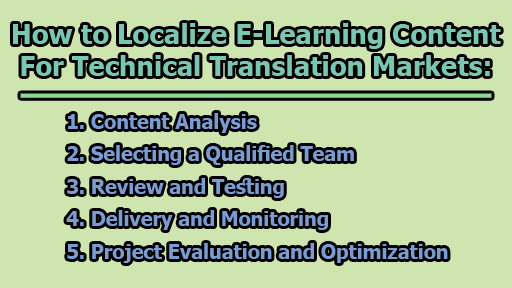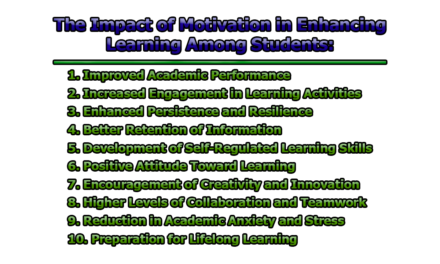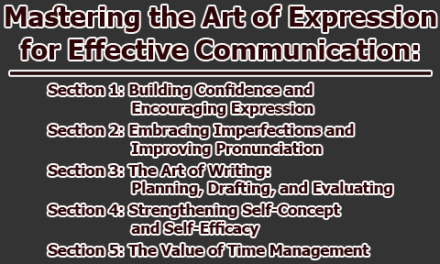The e-learning industry is a rapidly expanding and diverse sector that offers educational content across the globe. As it crosses language and cultural barriers, providing high-quality and accurate content is crucial for engaging learners from different linguistic and cultural backgrounds. However, in the world of technical translation, adapting e-learning content is not as simple as swapping words between languages. It requires a more intricate process known as localization. In the rest of this article, we will explore how to localize e-learning content for technical translation markets and outline the benefits and challenges associated with this practice.
Understanding Technical Translation:
Technical translation is a specialized field dealing with texts that contain industry-specific terminology, concepts, and information. Examples of areas where technical translation is essential include engineering, IT, medicine, law, science, and finance. Translating technical content necessitates not only linguistic expertise but also subject matter proficiency, research skills, and familiarity with field-specific standards and conventions. Technical translation commonly encompasses documents such as manuals, patents, contracts, reports, specifications, and instructions.
Why Localization Matters in Technical Translation:
Localization is the process of adapting a product or service to a specific market or culture, addressing linguistic, cultural, technical, and legal aspects of the target audience. In the context of e-learning, localization transcends mere translation by modifying content, design, format, and functionality to align with local preferences and expectations. This is particularly critical for technical translation as it ensures the e-learning content’s relevance, accuracy, and effectiveness for the target audience. It helps prevent misunderstandings, errors, and cultural clashes that could compromise the quality and credibility of the content.
Benefits of Localizing E-Learning Content for Technical Translation Markets:
- Increased Accessibility: Localization widens the reach of e-learning content, making it accessible to more learners in their preferred language and format.
- Enhanced Engagement: Localized content resonates with learners, leading to increased engagement and retention. Learners are more likely to connect with content that feels familiar and comfortable.
- Improved Learning Outcomes: Learners can understand and apply the content more effectively when it is localized, as it aligns with their specific contexts and needs.
- Reputation and Competitiveness: Content providers that invest in localization demonstrate professionalism, quality, and respect for target markets and cultures, which enhances their reputation and competitiveness.
Challenges in Localizing E-Learning Content for Technical Translation Markets:
- Expertise and Collaboration: Translators must possess both linguistic and technical skills, in addition to knowledge of the target market and culture. Collaboration between content providers and translators is vital for success.
- Project Complexity: The localization process involves planning, management, and quality assurance, requiring careful consideration of factors such as scope, budget, timeline, format, and delivery methods.
- Technical and Cultural Barriers: Issues such as text expansion, layout adaptation, multimedia integration, code compatibility, and cultural sensitivity can hinder localization quality and usability.
How to Localize E-Learning Content for Technical Translation Markets:
Let’s dive into the steps involved in localizing e-learning content for technical translation markets:
1. Content Analysis: Begin by analyzing the e-learning content to determine the scope and level of localization required, and select target languages and markets.
- Scope Determination: Begin by thoroughly assessing your e-learning content to understand the extent of localization required. This involves identifying which elements of the content need adaptation. This could include text, images, audio, video, assessments, or interactive elements.
- Cultural Considerations: Take into account the cultural nuances and preferences of the target audience. Understand that some content may need to be modified to align with local customs, beliefs, and traditions.
- Language Selection: Choose the target languages for localization. Be sure to consider regional variations and dialects that may be more appropriate for specific markets. Make data-driven decisions based on the potential reach and demand in each language.
2. Selecting a Qualified Team: Choose a qualified and experienced translator or localization team capable of handling both the technical and linguistic aspects of the e-learning content.
- Subject Matter Experts: Given the technical nature of the content, it’s crucial to have translators who are not only skilled linguists but also have expertise in the relevant field. Translators with subject matter knowledge can accurately convey technical concepts.
- Localization Experts: Look for experienced localization specialists who understand the nuances of adapting content for different cultures. They should have a deep understanding of both the source and target cultures to ensure a seamless adaptation.
3. Review and Testing: Review and rigorously test the localized content to ensure it meets the quality and usability standards of the target market and culture.
- Localization Testing: After the content is translated and adapted, rigorous testing is essential. Ensure that all elements, from text to multimedia, display correctly and function as intended. This includes checking for layout issues, text expansion or contraction, and multimedia compatibility.
- Cultural Sensitivity Review: A careful review of the content is needed to identify any elements that may inadvertently offend or misrepresent the culture of the target audience. It’s important to address these issues before finalizing the content.
- Usability Evaluation: Conduct user testing or pilot studies with representatives from the target audience to gather feedback on how well the localized content aligns with their preferences and needs. Make necessary adjustments based on this feedback.
4. Delivery and Monitoring: Deliver and distribute the localized content and continuously monitor its performance and feedback. Evaluate the project’s results and identify areas for improvement or optimization.
- Distribution Strategy: Plan the distribution of the localized e-learning content. Consider the platforms, devices, and channels through which the content will be delivered. Ensure compatibility with various e-learning systems and tools.
- Continuous Monitoring: Once the content is deployed, continuously monitor its performance. Collect feedback from users and track key performance metrics. Be prepared to address any issues that may arise, whether they are technical or cultural in nature.
- Feedback Loop: Create a feedback loop for ongoing improvements. As you gather insights from users, incorporate changes to enhance the quality and relevance of the content. This may include updates to accommodate changing cultural norms or technical advancements.
5. Project Evaluation and Optimization:
- Post-Project Evaluation: After the localization project is complete, conduct a comprehensive evaluation to measure its success. Assess how well the content is received, how effectively it meets its objectives, and whether any unforeseen challenges arose.
- Continuous Improvement: Use the insights gained from the evaluation to identify areas for improvement or optimization. This may involve refining the localization process, updating content, or expanding into new markets with similar needs.
- Long-Term Commitment: Understand that localization is not a one-time task but an ongoing process. As technologies, cultural norms, and markets evolve, so should your localized e-learning content. Be prepared to commit to long-term maintenance and updates.
In conclusion, in the realm of e-learning, localization is indispensable for technical translation markets. It ensures that e-learning content remains relevant, accurate, and effective for learners from various linguistic and cultural backgrounds. Although it presents challenges, careful planning, expert collaboration, and the use of appropriate tools and methods can overcome these hurdles. Ultimately, localization not only benefits content providers by expanding their reach and enhancing their reputation but also enriches the learning experience for the global audience, fostering understanding and knowledge dissemination across borders and languages.

Library Lecturer at Nurul Amin Degree College










